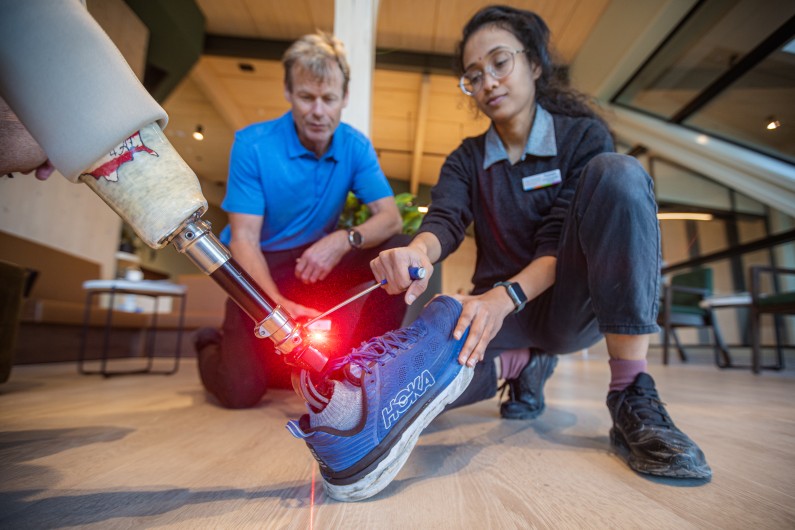Celebrating the Heroes Behind Prosthetics and Orthotic Services

November 5 is International Prosthetics and Orthotics Day and is an opportunity to celebrate the important role clinical staff play delivering Peke Waihanga prosthetic and orthotic services.
Peke Waihanga multi-disciplinary teams of highly trained clinicians work across the nation to deliver high quality services. The teams are made up of prosthetists/orthotists, physiotherapists, occupational therapists, doctors, nurses and podiatrists who work collaboratively to make a difference to thousands of New Zealanders.
“I am immensely proud of the work our multi-disciplinary teams do, not just for their contribution in ensuring Peke Waihanga success as an organisation, but also for our staff’s passion and dedication in helping people mobilise, enriching their lives and helping them become independent” CEO Sean Gray says.
The International Society on Prosthetics and Orthotics (ISPO) launched the International Prosthetics and Orthotics Day to highlight and raise awareness of the importance of prostheses and orthoses and recognising the valuable work of professionals in prosthetics and orthotics. The theme for this year’s day is “Personnel – Enabling and Empowering Mobility” and focuses on the key personnel involved in providing services, celebrating their dedication, expertise and teamwork.
Key statistics
Globally, 0.5% of the population requires prostheses and orthoses and rehabilitation treatment. This corresponds to 35–40 million people worldwide who require prosthetic and orthotic (P&O) services.
At least two to four times more people require services for orthotic treatment than for prosthetic treatment. Due to the global population increase and improved life expectancy those requiring P&O services will rise accordingly, ISPO says. As a larger proportion of the ageing population will be affected by disability, the need for services will also rise proportionally.
The world is witnessing significant increases in musculoskeletal conditions and non-communicable diseases such as diabetes and stroke, which, if they continue, will greatly add to the need for prostheses and orthoses. Thus, by the middle of this century, the proportion of the world’s population that requires services is likely to be closer to 1%.
Peke Waihanga has already experienced a 7% increase in prosthetic service patients over the last five years with numbers growing from 4,856 in 2020 to 5,459 in 2024. Peke Waihanga orthotic service delivery is also increasing, with services delivered to 22,639 patients in the year to 2023.
Back

